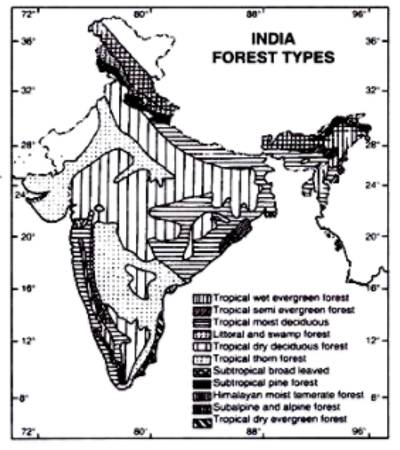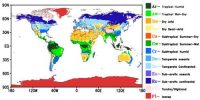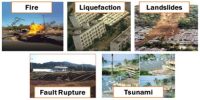Types of Forests in Indian Subcontinent
Indian Subcontinent is not only famous for its diverse wildlife, architectural marvels, and culture, but also for its dense and vast forest cover. Indian climate befits the variety of flora and fauna. Natural vegetation refers to a plant community that has been left undisturbed over a long time, so as to allow its individual species to adjust themselves to climate and soil conditions as fully as possible.
India is a land of the great variety of natural vegetation. Himalayan heights are marked with temperate vegetation; the Western Ghats and the Andaman Nicobar Islands have tropical rainforests, the deltaic regions have tropical forests and mangroves; the desert and semi-desert areas of Rajasthan are known for cacti, a wide variety of bushes and thorny vegetation. Depending upon the variations in the climate and the soil, the vegetation of India changes from one region to another. On the basis of certain common features such as predominant vegetation type and climatic regions, Indian forests can be divided into the following groups:

Types of Forests –
(i) Tropical Evergreen and Semi Evergreen forests: Tropical evergreen forests are usually found in areas receiving more than 234 cm of rainfall and having a monthly mean temperature of 18 °C or higher in the coldest months
(ii) Tropical Deciduous forests: They are also called the monsoon forests. Tropical Deciduous Forests thrive where the rainfall is between 70cm. and 200 cm. The trees in these forests shed their leaves for about six to eight weeks in summer.
(iii) Tropical Thorn forests: In regions with less than 70 cm of rainfall, the natural vegetation consists of thorny trees and bushes. Leaves are mostly thick and small to minimize evaporation
(iv) Montane forests: In mountainous areas, the decrease in temperature with increasing altitude leads to the corresponding change in natural vegetation. The wet temperate type of forests is found between a height of1000 and 2000 meters.
(v) Littoral and Swamp forests: Found in the areas of coasts influenced by tides. Mud and silt get accumulated on such coasts.














